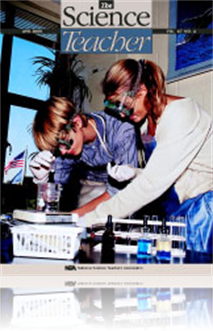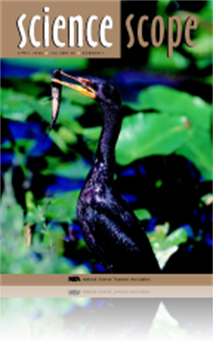All Resources
Journal Article
After participating in a professional development class entitled “Energy and the Environment,” sponsored by the American Electric Power Company, the author studied coal as an energy source and its effect on the environment. The final assignment w...
Journal Article
Today, federal and state laws in the United States prohibit the killing of birds for their feathers, and similar legislation regulates the hunting of game birds. But despite these efforts, the relationship between birds and humans is strained, partic...
Journal Article
Commentary: The Case for Integrated Science
An opinion piece about the increasing interest in high school integrated science courses throughout the United States....
Journal Article
Spatial Thinking Strategies: Promoting cognitive processes in the elementary classroom
While some people consider spatial thinking a “gift” that only some individuals have, many others view spatial thinking as a cognitive process that can be developed. Much research supports the developmental view of spatial thinking as a cognitive...
Journal Article
Nature in the City: Outdoor projects for urban schools
This article provides three, inquiry-based activities that help urban students learn about nature—observing coloration patterns of pigeons, measuring local rainfall and comparing it to other areas, and conducting a biodiversity study by observing ...
Journal Article
Problem-based learning (PBL) is a powerful vehicle for inquiry-based learning in which students use an authentic problem as the context for an in-depth investigation of what they need and want to know (Checkly, 1997). This article presents ten steps ...
Journal Article
Editor's Note: Stand Up and Be Counted
Science and Children’s editor shares thoughts regarding the current issue....
Journal Article
Before you throw an object into the air, it is wise to remember that “What goes up must come down.” Similarly, before you throw an object away, you should recall that “mass cannot be created or destroyed during a chemical or physical reaction.�...
Journal Article
Problem-based learning is a powerful tool that motivates students to learn problem solving through investigation and research. The problems should be applicable to real life, messy or undefined, and require students to create products. To introduce t...
Journal Article
Imagine studying the history and technology of the Civil War through photographs taken at that time and learning about the chemistry and mathematics of photography by building cameras. That’s what elementary students do as part of Project WRITE (Wo...
Journal Article
Have you ever wondered how thunderstorms actually form? Offering an age-appropriate explanation can be quite challenging because thunderstorms are very complicated atmospheric phenomena. However, by using a little creativity and a few household items...
Journal Article
Get Connected to Science: The possibilities abound with today's high-tech classroom resources
Too often classroom computers are used for word processing or drill and practice software. However, these uses don’t begin to tap into the rewards of computer technology. This article describes how elementary students used technology in three areas...
Journal Article
Students of all ages are fascinated by space because it represents a mysterious frontier, and rockets excite students because they represent the means by which scientists learn about this frontier, through satellites or probes to other planets. Use t...
Journal Article
At Central Washington University, groups of on-campus and distance education students in an elementary science methods class interacted with each other via email to complete five cooperative reaction papers. In surveys about their views on writing pa...
Journal Article
The Case Study: Death in a Viennese Maternity Ward—Childbed Fever—A Nineteenth-Century Mystery
This case provides a brief, factual account of the pioneering work of Ignaz Semmelweis and his efforts to remedy the problem of childbed fever. The case is featured in four parts, each followed by study questions. Teaching Notes are provided....
Journal Article
One of your greatest challenges as a new teacher is learning how to engage your students. If students aren’t actively involved in the learning process, they cannot excel in the science classroom. This article presents some strategies for capturing ...
Journal Article
This paper describes some of the nuts and bolts problems associated with making the transition from traditionally taught laboratories to investigative student-centered ones. The three main areas the authors consider are: 1) What are the institutional...
Journal Article
Science classes are an appropriate place for students to examine relevant ethical problems. Nutrition science classes, in particular, discuss current scientific information as well as ethical issues, such as cultural differences, meanings attached to...









